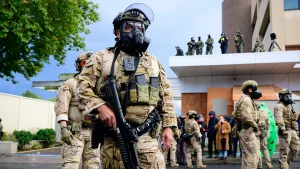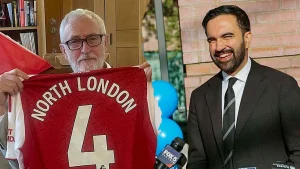Citizen Enforcers Earn Big Money Fighting Pollution in NYC
In the bustling streets of New York City, a unique environmental initiative has created an unexpected profession: citizen pollution enforcers who are earning substantial sums for documenting idling vehicles. The Citizen Idling Complaint Program, launched in 2019 and famously promoted by ’80s rock icon Billy Idol, allows ordinary New Yorkers to record videos of trucks idling for more than three minutes or school buses idling for more than one minute and submit them as evidence. The program rewards these whistleblowers with 25% of fines when complaints are processed through the Department of Environmental Protection, or 50% if they go directly through the Office of Administrative Trials and Hearings (OATH). With fines ranging from $350 to $2,000 and an impressive 95% substantiation rate, some dedicated participants have turned this civic duty into a lucrative occupation, with top earners collecting between $500,000 and nearly $1 million.
The program’s top performers have made this environmental vigilance extremely profitable. According to Department of Environmental Protection records, the highest earners include Ernest Welde of Manhattan’s East Village with $895,737, Wanfang Wu from the Lower East Side at $748,825, Ephraim Rosenbaum also from the Lower East Side with $725,025, Michael Streeter of Brooklyn Heights earning $709,975, and Patrick Schnell from Boerum Hill, Brooklyn, with $582,800. These figures represent estimated total earnings since the program’s inception. The accessibility of the work—requiring only a smartphone and persistence—has led to a dramatic increase in participation, with complaint submissions soaring from 49,000 in 2022 to 124,000 in 2024, with more than 100,000 already filed this year alone. This surge indicates that more New Yorkers are discovering this opportunity to both protect the environment and supplement their income substantially.
However, the program’s success has sparked controversy and criticism from city officials who never intended for it to become such a profitable venture for participants. Queens City Councilman James Gennaro, who chairs the Environmental Committee, has stated emphatically that “the days of the six-figure bounty hunters are over,” suggesting that significant changes to the reward structure may be forthcoming. Department of Environmental Commissioner Rohit Aggarwala echoed this sentiment last year when he told the council, “While we can and should pay people who do the service of reporting offenses, we do not need to make them millionaires.” These statements reflect growing concern among city leadership that the program has evolved beyond its original intent as a citizen-engagement initiative into something more akin to a professional bounty-hunting operation.
Another criticism of the current implementation is the geographic distribution of enforcement activity. DEP officials have pointed out that citizen enforcers tend to concentrate their efforts in the city’s business districts like Midtown and Lower Manhattan, as well as wealthier neighborhoods in Brooklyn and western Queens. This pattern means that “environmental justice communities” such as Harlem, the South Bronx, East New York, Brownsville, and Staten Island’s North Shore—areas that often face higher pollution levels—receive less attention from these citizen enforcers. This disparity raises questions about whether the program is truly addressing air quality issues where they’re most severe or simply creating financial opportunities in areas where violations are easiest to document.
The citizen enforcers themselves have mixed reactions to the public scrutiny. When confronted about his reported earnings of $582,800, Patrick Schnell expressed surprise and denied receiving that amount, adding only that “it’s hard work” before ending the conversation. This suggests there may be discrepancies between the DEP’s recorded figures and what individuals have actually collected, or perhaps reflects reluctance to discuss substantial earnings from the program. Other top complainants have chosen to respond collectively through George Pakenham of the New York Clean Air Collective, who defended the program by emphasizing the serious health impacts of air pollution, which he says “causes cancer, dementia, asthma, and 3,200 premature deaths in New York each year.”
As the debate over the program’s future continues, advocates like Pakenham are pushing not for limitations but for expansion and improvements. They’re calling on the Department of Environmental Protection to modernize its “ancient website,” eliminate barriers for non-English speakers, and hire additional staff to hold polluters accountable. This perspective frames the citizen enforcers not as opportunists but as essential partners in the city’s environmental protection efforts. The tension between these views—seeing participants as either exploiting a flawed system or providing a valuable public service—will likely shape whatever reforms city officials implement. As New York continues to balance environmental goals with fiscal responsibility, this unique program stands as an interesting case study in the possibilities and pitfalls of incentivizing citizen participation in environmental enforcement.










